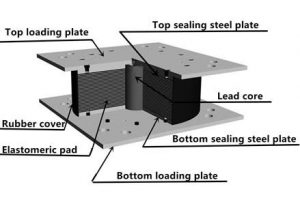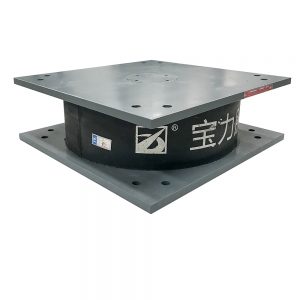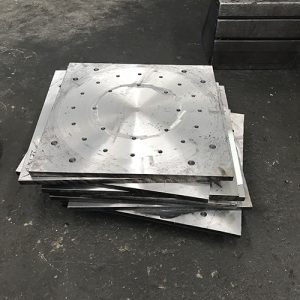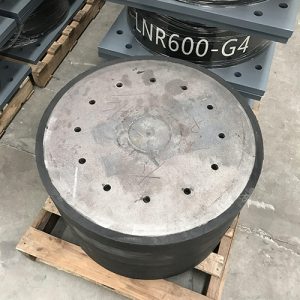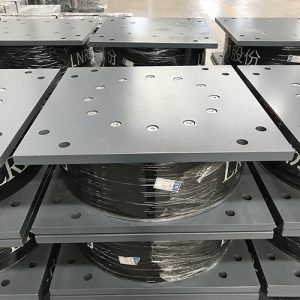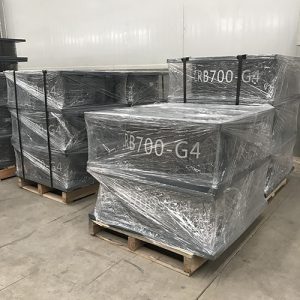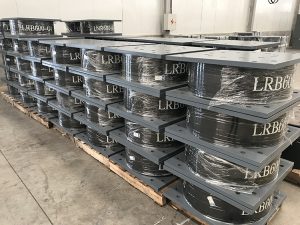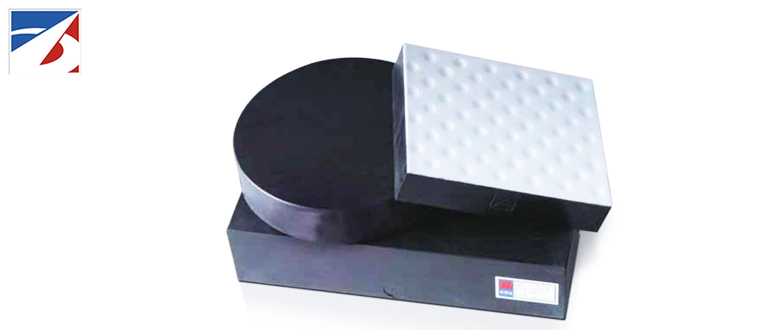High Damp Seismic Isolation Lead Rubber Bearing

Spherical bearing for bridge with EN1337 standard
2019年3月23日
Viscous Fluid Damper-VFD
2019年3月27日High Damp Seismic Isolation Lead Rubber Bearing

Seismic Isolation Rubber Bearing
Lead Rubber Bearing (LRB)
Lead Rubber Bearings (LRB) consists of a laminated rubber and steel bearing with steel flange plates for mounting to the structure. Ninety percent of our isolators have an energy dissipating lead core. The rubber in the isolator acts as a spring. It is very soft laterally but very stiff vertically. The high vertical stiffness is achieved by having thin layers of rubber reinforced by steel shims. These two characteristics allow the isolator to move laterally with relatively low stiffness yet carry significant axial load due to their high vertical stiffness. The lead core provides damping by deforming plastically when the isolator moves laterally in an earthquake. The shims for isolators are cut to exacting tolerances by laser. The steel mounting plates are machined by computer-controlled milling machines that give high production throughput and accuracy. Molding each bearing takes 8 to 48 hours depending on the size of the bearing. The curing phase is continuously monitored to ensure that the rubber is uniformly cured throughout the bearing.
Material Used for LRB
Rubber – the elastomer of the isolator will be natural rubber, all material testing shall be in accordance with EN 15129, or cross reference EN standard; Shim Plates- Shim plates and top and bottom end plates will be made from rolled carbon steel conforming to ASTM A35 or equivalent conforming to EN 15129; Lead- The Purity of lead shall be established by chemical analysis and shall confirm a minimum of 99.9% purity of the lead.
Physical and mechanical properities of elastomer
| Characteristics | Requirements | Test methods | ||
| G Modulus (MPa) | 0.7 | 0.9a | 1.15 | |
| Tensile strength (MPa)
Moulded Test Piece Test Piece From Bearing Minimum Elongation at Break (%) Moulded Test Piece Test Piece from Bearing |
≥16 ≥14 |
≥16
≥14 |
≥16
≥14 |
ISO 37
type 2 |
| 450
400 |
425
375 |
300
250 |
||
| Minimum Tear Resistance (kN/m )
CR NR |
≥7 ≥5 |
≥10 ≥8 |
≥12 ≥10 |
ISO 34-1
Touser (Method A) |
| Compression Set (%)
24h; 70℃ |
CR≤15
NR≤30 |
ISO 815
φ29×12,5mm Spacer: 9,38-25% |
||
| Accelerated Ageing
(Maximum change from unaged value) -Hardness (IRHD) NR 7d, 70℃ CR 3d, 100℃ -Tensile strength (%) NR 7d, 70℃ CR 3d, 100℃ -Elongation at break (%) NR 7d, 70℃ CR 3d, 100℃ |
-5+10 ±5
±15 ±15
±25 ±25 |
ISO 48
ISO188 |
||
| Ozone Resistance
Elongation: 30%-96h 40℃±2℃ NR 25 pphm CR 100pphm |
No cracks | ISO 1431-1 | ||

